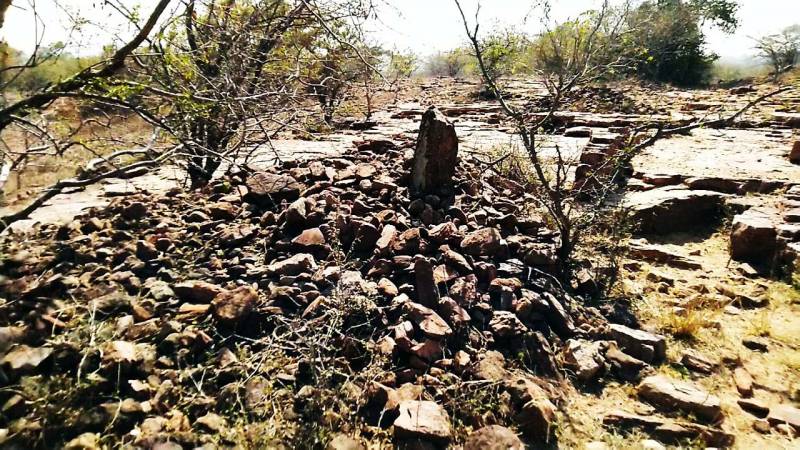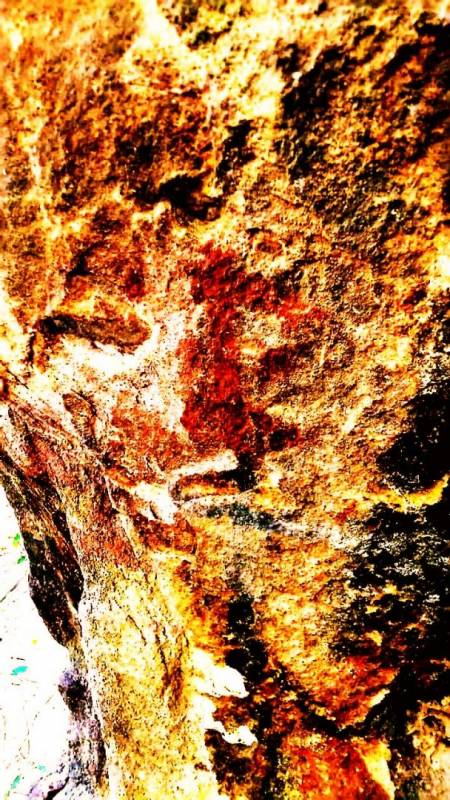The unturned historic pages of Telangana’s Ramagiri Fort
By Anurag Mallick
Hyderabad: Samudrala Sunil, a historian and guide at the Ramagiri Fort of Telangana, has found a few pieces of evidence under his search at the fort. Located at Peddapalli in Telangana, the Ramagiri Fort has a unique history, deserving of a page in the Telangana history books. The fort is an excellent example in studying the history and culture of the state.
Once an individual starts climbing the Ramagiri Fort and reaches the first door, they would find a broken door and the first castle. To the right side of the door, one can find a gate of the fort made by Tummi khan in 1478 BC, spending 10,000 Rukas (Groats). Taking a left towards grasshopper’s side once can find a marriage well. Past the well is a small cave, which houses rock carvings in red colour.

The rock carvings feature humans, bulls, and other animals that are indecipherable. A study of these drawings, its genre and materials, indicate that these carvings belong to the Chalcolithic period. From the Old Stone Age to the New Stone Age, these are called a reflection of modern culture. The rock carvings are around four or five-millennia-old.
The other side of the cave also features similar rock carvings, having done with stone chisels and hammers. Such drawings are often known petroglyphs. The one on the cave features a hunter with a trident in his left hand and a huge bird. The petroglyphs appear to be older than the rock drawings.

Thakur Raja Ram Singh once saw these petroglyphs in Narrayeshalapalli and identified them to be a part of the Mesolithic age. One can find these in VV Krishna Shastri’s book as well. Due to the similarities, one can say that the Ramagiri petroglyphs are from the Mesolithic age as well. Raja Ram Singh was the one who found micro stone tools in large numbers at the Ramagiri Fort.
Moving 10 km from there, there are around 36 piles of tombstones. These are made on a rocky surface with a collection of rare stones. Among these, one can find a fallen pillar after crossing the sixth tomb. After these, one can discover rocky pillar-like structure at the end of the monuments, made with a stack of stones at each grave. Skeletons have been found in a few of the graves whereas, in the surroundings, you can discover slags of iron, cup marks on the rocks, and pottery shells.
Crossing these will lead us to Pandava Lanka, where we can find two down wells and one hand well, besides a ruined habitat. Going even further, we can identify ancient landmarks and more historical evidence.

Speaking to NewsMeter, Samudrala Sunil said, “These images belong to the Mesolithic age. According to my assumption, these images could have been drawn when one was resting in the caves. This can be a good example of human beings behaving friendly to animals and birds ever since.”
Samudrala Sunil, a historian and guide at the #RamagiriFort of Telangana, has found a few pieces of evidence under his search at the fort. Located at Peddapalli in Telangana, the Ramagiri Fort has a unique historyhttps://t.co/WcCyt4FqKb
— NewsMeter (@NewsMeter_In) October 22, 2019
He further added that jasmine might have been involved in the drawing process. “These images were made from jasmine, juices of tree roots and leaves. This proves that humans had an interest in colours right from the Mesolithic age. You can find these images in many places in India. It was 50,000 years ago when humans visited Telangana. These images are evidence for that,” Sunil added.